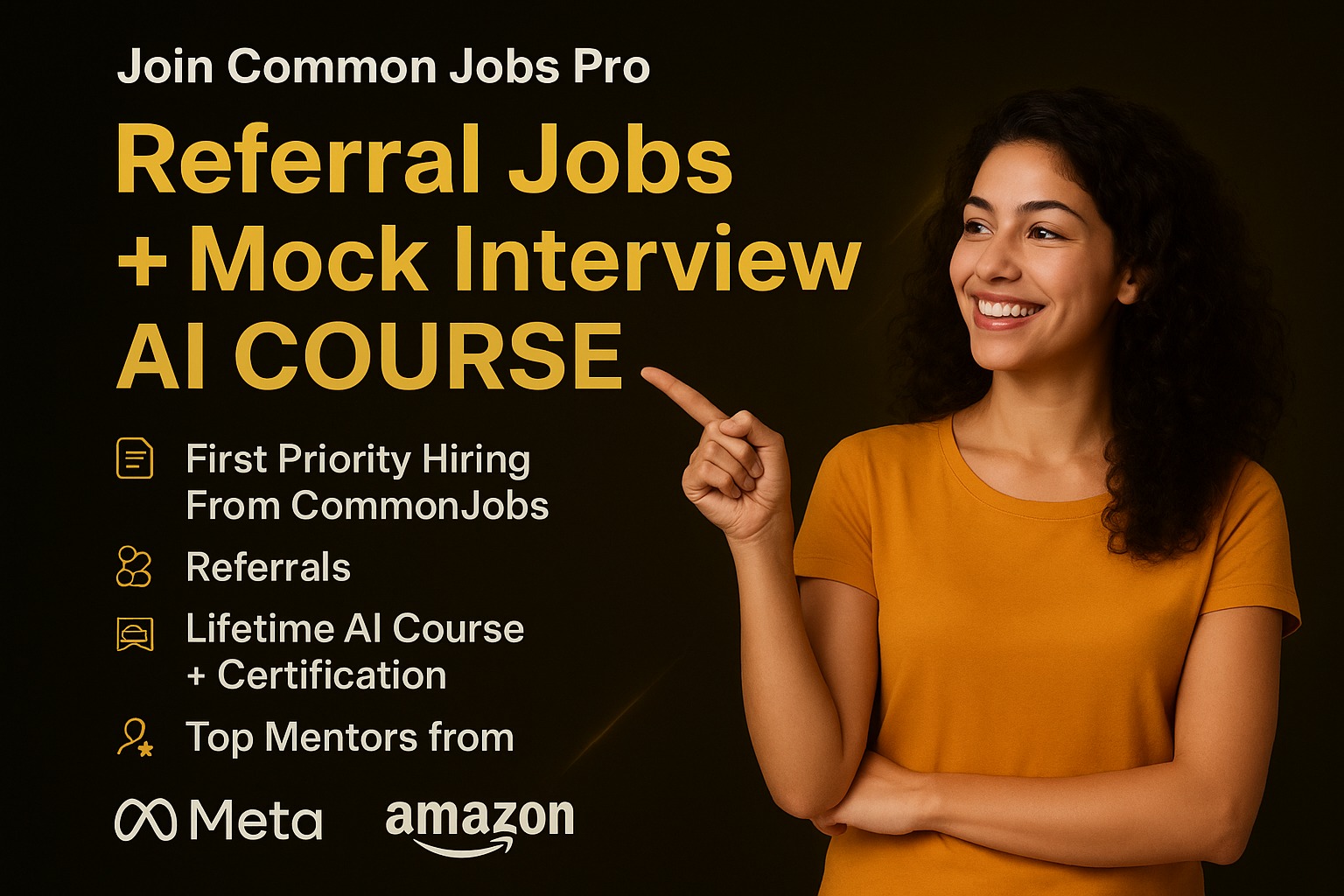Microsoft New Study revile : Which Careers Are Most at Risk—and Which Are AI‑Proof
Microsoft New Study revile : Which Careers Are Most at Risk—and Which Are AI‑Proof : Microsoft Research released a groundbreaking study in July 2025 that examined how the practical application of generative AI is changing the nature of work. Researchers determined the AI applicability score of various professions by examining 200,000 anonymized Microsoft Copilot chat logs. This score indicates how closely each role matches tasks that AI is already capable of handling. As a result, 40 occupations with the highest risk of AI disruption and 40 with the lowest risk were ranked. The study presents a nuanced perspective: AI is more likely to enhance rather than replace many roles, despite the alarming headlines that soon followed.
The Microsoft Copilot chatbot and 200,000 anonymized conversations between American users were examined in a recent Microsoft Research study titled “Working with AI.” The objective is to determine which jobs have the highest and lowest AI applicability scores, which show how easily each role can be automated or assisted by AI. According to the research, 40 job categories—including those like interpreters, translators, salespeople, writers, customer service representatives, historians, and web developers—are most likely to be impacted by AI.
Phlebotomists, nursing assistants, dredger operators, roofers, massage therapists, and housekeeping cleaners are among the 40 professions with the lowest AI applicability—those perceived to be most immune to AI—that typically require manual labor, physical presence, or human touch. Although Microsoft stresses that AI is increasing productivity rather than completely replacing jobs, detractors point out the wider implications for socioeconomic inequality and workforce disruption.
Free AI Courses 2025 with Certificates: Learn and Upskill Without Spending a Rupee
What the Study Measured
Two important factors were measured by Microsoft’s team across almost 1,000 different occupations:
AI usage frequency in routine work-related discussions with Copilot
- efficacy of AI support, as determined by user input during those sessions, which together produced the AI applicability score.
- The research helps identify roles where automation is already taking root—and where it isn’t—by illuminating the extent to which specific tasks within a role can be handled by AI, as opposed to forecasting the complete loss of jobs.
Top 10 Jobs Most AI‑Friendly (Highest AI Applicability)
The following roles scored highest in terms of overlap between job duties and AI capabilities:
- Interpreters & Translators
- Historians (typically queried for research assistance)
- Passenger Attendants (e.g., travel clerks, ticket agents)
- Sales Representatives (Services)
- Writers & Authors
- Customer Service Representatives
- CNC Tool Programmers
- Telephone Operators
- Ticket Agents & Travel Clerks
- Broadcast Announcers & Radio DJs
The complete list of 40 includes professions where communication, research, writing, repetitive documentation, or data analysis are essential, such as public relations specialists, technical writers, data scientists, web developers, and economists.
10 Jobs Least Exposed to AI (Lowest AI Applicability)
These roles scored at the very bottom—many scoring near or at zero applicability to current language‑model AI:
- Phlebotomists, Nursing Assistants, Orderlies
- Massage Therapists, Maids & Housekeeping Cleaners
- Dredge Operators, Bridge & Lock Tenders, Motorboat Operators
- Pile Driver Operators, Rail‑Track Maintenance Workers
- Floor Sanders, Foundry Mold & Coremakers, Logging Equipment Operators
- Roofers, Highway Maintenance Workers, Machine Feeders, Packaging Operators
- Surgical Assistants, Gas Compressor Operators, Tire Builders, Plant/System Operators
These jobs are similar in that they require human care, manual dexterity, physical presence, and the ability to operate real-world machinery—all of which generative AI tools aren’t made to do.
What It Does and Does Not Mean
❗ Not Armageddon brought on by AI
Researchers at Microsoft warn that a high AI applicability score is not a guarantee of impending layoffs. Instead of outsourcing their entire job, many employees use AI tools to support or expedite tasks. The AI applicability score takes into account task type overlap rather than complete replacement.
But Adaptation Is Critical
According to the findings, office-based, knowledge-driven roles are the most suitable for integrating AI, which could lead to an increase in efficiency. In order to stay indispensable, workers in highly impacted professions might need to acquire complementary skills like leadership, critical thinking, interdisciplinary management, and strong human-centric abilities.
Wider Social Ramifications
The study adds to the continuing discussion about whether AI will increase inequality or lead to job displacement in some white-collar industries. However, Microsoft claims that the use of AI can increase economic output and productivity, even though the long-term socioeconomic effects are still unknown.
Referrals Are the New Resumes — Start Networking Now
Unexpected Patterns
- Professionals with advanced degrees, such as professors, economists, and technical writers, were among the most affected, demonstrating that cognitive work with credentials can be just as at risk as entry-level secretarial positions.
- On the other hand, a lot of low-paying manual jobs are still in demand—not because they aren’t valuable, but rather because text-based AI can’t automate the tasks involved.
So—Which Jobs Should You Consider?
| Category | AI Impact | Why It Matters |
|---|---|---|
| Language, writing, and data | High | These tasks map closely to current AI strengths. |
| Creative or strategic | Moderate | AI offers support, but cannot replicate human insight. |
| Hands-on, manual or caregiving | Low | Inherent human involvement protects these roles. |
Career resilience will likely hinge on roles combining human empathy, face-to-face interaction, complex judgment, and creative problem‑solving—areas where AI remains limited.
Important Considerations
It is important to keep in mind that these results are based solely on Microsoft Copilot usage in the United States and might not accurately reflect trends on other platforms or in other nations. Informal employment, tasks outside of traditional job categories, such as housework, and the quickly developing field of AI-robotics integration were also excluded from the study.
A useful and intriguing road map for comprehending AI’s present effects on the labor market is provided by the Microsoft study. It emphasizes that although physical and hands-on professions continue to be largely separate, generative AI is a potent tool for revolutionizing knowledge work, communication, and sales. It appears that a dynamic collaboration between intelligent machines and humans will be more important in the future of work than complete replacement.
Moving Forward: Preparing for a Hybrid Workplace
- Stay Informed: As Microsoft’s findings underscore, disruption varies by occupation. Keep an eye on how AI is being integrated regionally and sector-wise.
- Upskill with AI Tools: Even if your job isn’t disappearing, learning to use AI tools effectively can boost your productivity.
- Emphasize Unique Human Skills: Focus on developing capabilities like emotional intelligence, design thinking, and interpersonal communication.
Conclusion
Microsoft’s study, which is based on actual use rather than theoretical models, identifies the roles that are firmly human and those that are already being shaped by generative AI. Instead of forecasting widespread unemployment, it provides a task-oriented road map for comprehending the areas where automation is gaining ground. The message is clear for policymakers, educators, and workers alike: don’t panic, but be ready to adapt.



